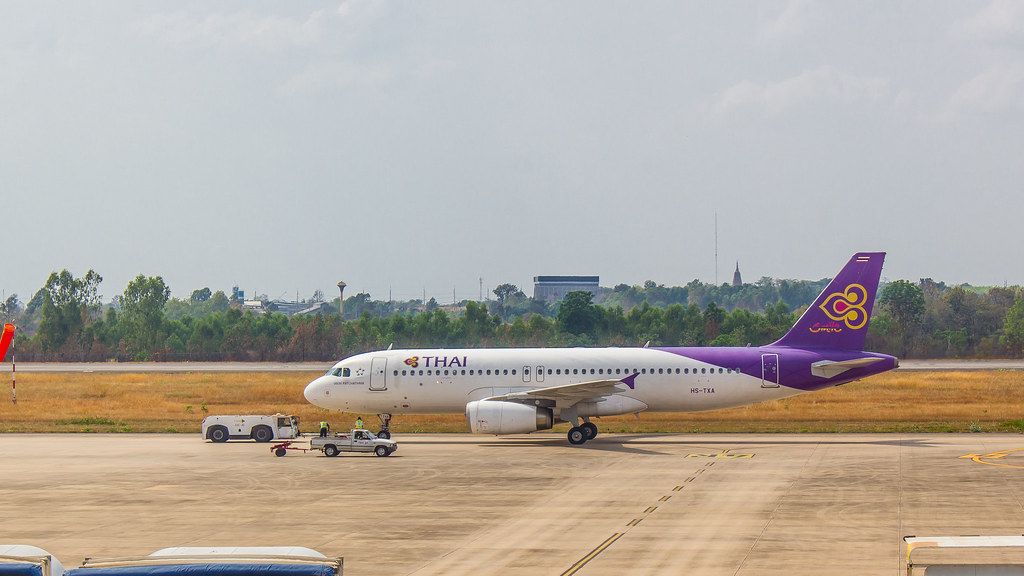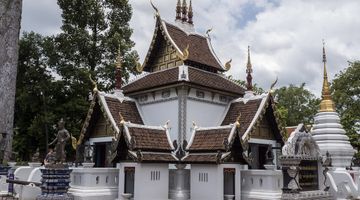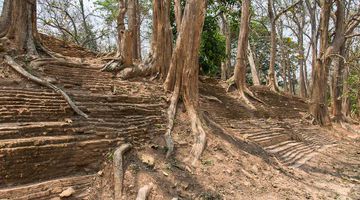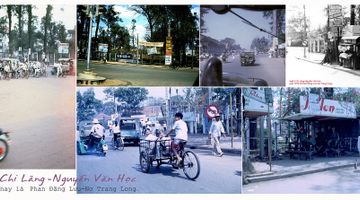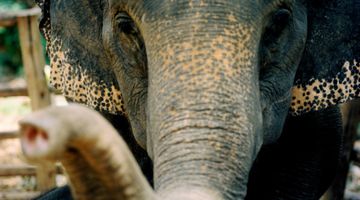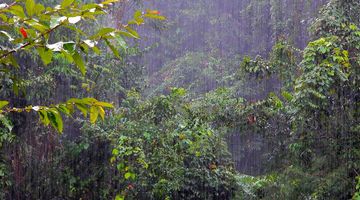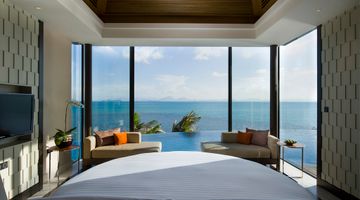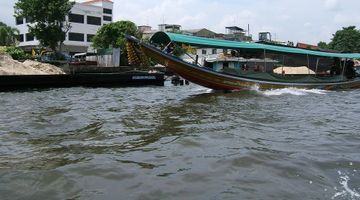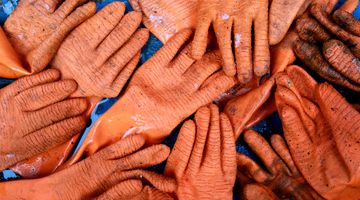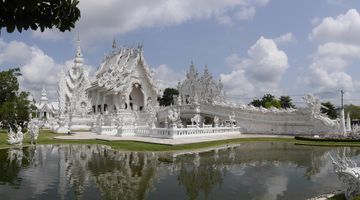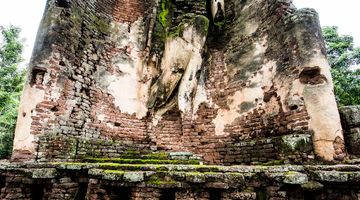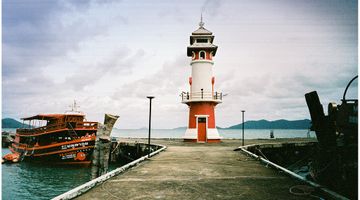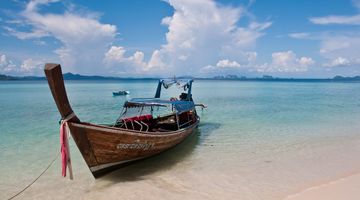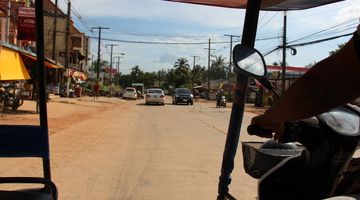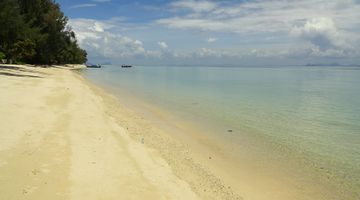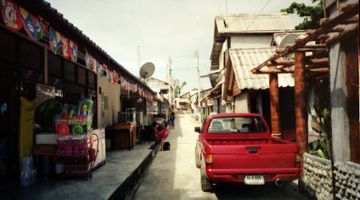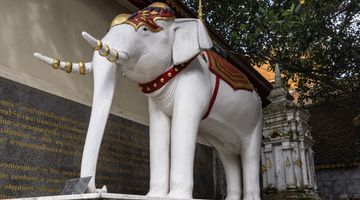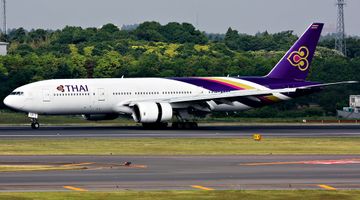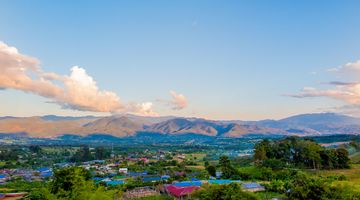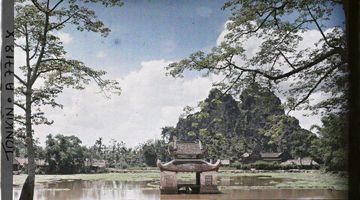Ubon Ratchathani Travel Guide
In a nutshell
Typically called “Ubon” by locals and those in the know, this Thai city in the northeastern part of the country has Lao roots and a somewhat slowly budding future.
Why go to Ubon
Back in the 1770s, a group of Laotians founded Ubon, whose name translates to “The Royal Lotus City.” Since then, it’s seen Khmer, Lao, Thai, and even American presence during the American-Vietnam War. If you happen to speak any Thai, you might be a little confused at the language many of the locals speak; a dialect from Laos is still used, even today.
Many people barely notice Ubon on their way in or out of Laos. It doesn’t make too much of a presence on the average tourist trail. However, some travellers do stop by for a few days – sometimes out of interest while passing through, and other times as a destination in and of itself.
If you find yourself in or around Ubon, don’t be surprised by the mix of young adults and monks. This city is home to multiple universities along with a number of Buddhist temples with a constant flow of monks and other devotees. Because of this, trendy cafes overlap with deep spiritual roots and tradition.
Alternatively, if you’re looking for some outdoor adventure, head to any of the three nearby national parks within Ubon province for some wonderful scenery and hiking.
When to go to Ubon
Ubon doesn’t see too much of a variation in temperature. Expect heat – pretty much anytime throughout the year.
That being said, there are some slightly cooler times to visit, especially once the sun has set. April typically sees the hottest temperatures, up to 35 degrees Celsius, while December is a bit cooler, where the lows can sometimes drop down to 16 degrees Celsius at night. You’ll most likely experience your fair share of rain from June through September, so if you aren’t up for frequent downpours, plan your trip outside of those months.
Where to stay in Ubon
Finding accommodation in Ubon Ratchathani is typically easy. The city’s hotels and guesthouses offer good value for your money, although most places are pretty basic and simple. Even if you are looking for an increase in quality from the average hotel, you still won’t find yourself shelling out too much extra money.
Most hotels are situated along the main highway through town, although you’ll be able to find others dotting the area farther out, too.
Another cluster can be found near where the highway meets the Mun River (or Moon River). No matter where you stay, expect low prices compared to Bangkok or other island and coastal cities. You’ll get good value here.
Where to eat in Ubon
If you’re looking for a cheap meal, head over to Thung Si Muang Park, where you’ll find the nearby night market. It’s not as bustling and sprawling as some of the others you might have come across by now, but the food is good and the prices are cheap. You’ll find a mix of Vietnamese and Thai food here, along with some other parts of the globe mixed in. Try a hearty Vietnamese sandwich served on a giant baguette, or go for a classic pad thai. If you don’t mind a little sweat, order a traditional Isaan dish, which is sure to be loaded up with spices.
How to get around Ubon
While we love the adventure that comes with exploring a new city on foot, walking through Ubon isn’t as pleasant as we’d like it to be. The sweltering heat makes it difficult to go too far throughout most of the year. Instead, we opted for one of three options throughout our stay.
Songthaews are typically the cheapest way to get around. These shared vans or trucks follow a specific route throughout the day. Different numbers displayed on the vehicles will identify which route they’re on. For THB10, you can hop on and then signal your stop by pressing a button indicator. There is a vast network of songthaew routes which covers the whole city. The routes are clearly marked with different colours and we think songthaew public transport system in Ubon is one of the best (or simply the best) in the whole country.
Alternatively, tuk-tuks and metered taxis are usually very easy to find anywhere in the city and very affordable, too – you do not ask drivers to turn on the metres – it goes for granted.
How to get to and from Ubon
Flights from Bangkok to Ubon and vice versa run as low as THB700 up to around THB1300 and higher, depending on when you buy. The trip lasts only about an hour, and multiple flights are available daily. This is the easiest choice, as service tends to be good, travel time is quick, and the cost is incredibly low. Air Asia and Nok Air usually have the cheapest flight options.
Alternatively, the Northeastern train line runs into Ubon from Bangkok and takes about 10 hours. There are 6 departure times each day from Bangkok to Ubon and vice versa. The cheapest seat can be had for just under THB100, whereas the most you’ll pay is closer to THB1,080. The price variation is quite large, but on the lower end, you’ll be sitting in a hard seat with no air conditioning for the entire ride. Paying the extra baht will provide you with a sleeper in an air conditioned compartment.
Bussing it in or out of Ubon is another option. If you’re traveling to Bangkok, grab a ticket on any of the numerous buses leaving all throughout the day from Ubon bus terminal which sits west of the intersection of the two main routes – 212 and 231. Almost all songthaew routes originate from the bus terminal, so it is easy to reach it from any part of town though the ride from the Moon River will take you about 30 minutes.
The ride to Bangkok will take around ten to twelve hours, but can often be more comfortable than the train. For a first class bus, which will provide air conditioning and on-board toilets, you’ll pay roughly THB600 for a ticket.
There are direct buses from Ubon to destinations throughout the country with a lot of Isaan and northern cities on the list. Check Khon Kaen (5 hours, THB300) or Chiang Mai (15 hours, THB800) as an idea.
To cross the border into Laos at Chong Mek, you can either take a bus to the border on the Thai side, and then find other onward travel, or you can buy a bus ticket from Ubon all the way into Pakse. Buses to the border take around an hour and a half and cost THB100. Rides leave throughout the day, with service stopping prior to the border checkpoint closing time at 8pm.
If you want to head straight to Pakse, you have a morning and evening departure option for the 3 hour ride, costing around THB200. While this option is far easier in our opinion, do make sure to keep your bags with you as you cross through customs. Bus drivers wait for all passengers to clear, but it’s not unheard of for passengers to accidentally be left behind.
Is Ubon safe?
Ubon is considered safe by most standards. You likely won’t see much or any crime in the area outside of a few tourist scams. Even those are relatively uncommon here, though. Tourism isn’t booming in this city like it is in other parts of the country, and the crime that comes along with that is also thankfully lacking.

